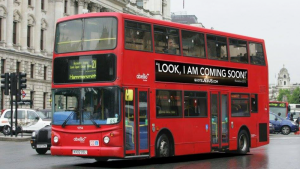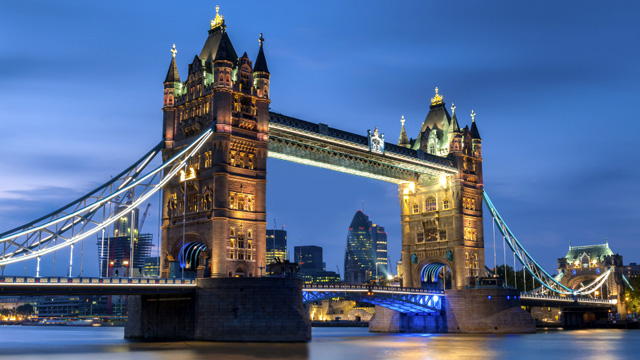 London, the first great changing city of the modern era is blessed with a myriad of spiritual journeys, from the early days of paganism, bloody Britain, through the dominance of Christianity to the multicultural worship scene of today. With thanks to the fires of Reformation and the 18th century reawakening, the past decades of church decline and moral degeneration invites us to a window of missional opportunity for regeneration and revival. The State may not do God, it is the business, calling responsibility and mission of the church to do God and disciple the people.
London, the first great changing city of the modern era is blessed with a myriad of spiritual journeys, from the early days of paganism, bloody Britain, through the dominance of Christianity to the multicultural worship scene of today. With thanks to the fires of Reformation and the 18th century reawakening, the past decades of church decline and moral degeneration invites us to a window of missional opportunity for regeneration and revival. The State may not do God, it is the business, calling responsibility and mission of the church to do God and disciple the people.
Edoardo Albert in his book, London: A Spiritual History challenges us on the need for London Regeneration beyond the past and present Britain landscapes, horrors, and charming magic. Albert explained that the London ‘city’s movers and makers, the talkers and mediacrities that fill screens and pages with prattle, remain blithely unaware of what is going on around them, so secure are they in their bubbles of influence.’ London, the global headquarters according to Albert ‘has become over the last twenty years the most religious part of Britain … the percentage of twenty-something Londoners going to church is almost double that for the rest of England.’ London Regeneration calls the church to step in and reach out to people, not only in Victorian zone of expansion, but often in new and unexpected places: cinema complexes, disused industrial units, closed-down shops, houses’ and other make-do premises. London Regeneration is a call to the United Kingdom to follow London spiritual mapping and growth.
Rob Wickham, bishop of Edmonton has acknowledged the significant regeneration and rising church attendances in London. According to him, “But it’s not just Anglican churches that are growing, but black Pentecostal churches and other denominations. It’s partly down to immigration, and partly simply as London grows so do its congregations.” The bishop explained that “as the nature of London changes, especially in areas of significant regeneration, we ‘re asking ourselves what are the most appropriate places for us to be in order for people and congregations to flourish.” One of the missional strategy undertaken by the London diocese across the city to establish gaps is a “significant mapping exercise.” The London mapping exercise according to the bishop is “… about how we reach out, sometimes in places where there might have been a degree of retreat, or in new housing developments, to build a sense of community at ground level.”
On the need and how to reach out to people, the bishop explained that “And part of it is that we’re much more proactive. Gone are the days when we expect people to come to us. Now we have churches meeting in pubs and cafes, running night shelters, food banks and debt advice services. As the state retreats, people of faith are stepping into its place.” The dedication of a purpose-built Anglican church, St Francis in Tottenham Hale opened yesterday in London for first time in 40 years is one of the ways the church is stepping in. Among other things, St Francis is to provide a renewing hope as ‘attendance in capital bucks national trend of decline.’ The first purpose-built Anglican parish church in London for 40 years on the site of a former factory and in the middle of new regeneration scheme consisting of hundred of homes is a departure from the maintenance mode of church management to mission. St Francis is the first of 100 new churches and worshipping spaces planned in London by 2020.
The words of the local Labour MP, David Lammy in the opening ceremony of St Francis calls the church to a more dynamic evangelism. According to him, “Someone at No 10 [Downing St] once said: ‘We don’t do God.’ I’ve always been very clear that here in Tottenham we do do God.” The opening of the church was a “very, very special moment” for a community that had faced difficult times. Lammy explained that the idea of St Francis Church in a community where there has been a lot of strife originated in response to the riots of 2011 ‘which started after police shot dead a Tottenham man, Mark Duggan.’
Church growth is an issue of missional concern and especially in recent years as signs of declining membership in main-line churches have been appearing. The concept of church growth numerically is a missional factor but it is not limited to numerical growth alone. Other factors and elements like fights for social justice, speaking truth to power and supports communities are important. The issue is that ‘numerical growth has been regarded the overriding symptom of vitality and the decline of membership the unquestioned sign of spiritual recession.’
London can be lonely and costly. The new church, St Francis provides us a witnessing model on how everyone in the congregation can unite, pray, and engage with other people around them in evangelism. Barriers are broken, conversation and conversion are encouraged, and lonely people engaged. London Regeneration is possible through the church’s mapping and evangelism strategy just as ‘no Roman historian noticed a Jew called Paul tramping their roads, but his journeys and those of the other apostles, proved of more importance than that of any emperor.’ St Francis in the new Hale Village development consisting of 1,200 homes for buying and renting, built on the site of the Lebus furniture factory, which switched production during the second world war to make engines for Mosquito bomber aircraft is a model of how to do church and disciple people when the the State don’t do God. St Francis is a model of church stepping in, and reaching our when the State retreats.











Recent Comments